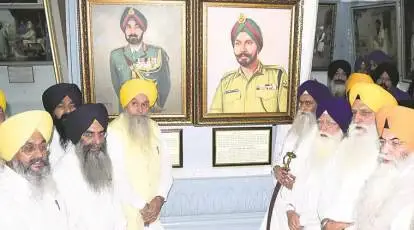Will Manmohan Singh outweigh Congress? Behind SGPC decision to put on hold former PM’s portrait

The SGPC and Its Political Influence
The SGPC holds immense influence over Sikh religious and political matters in Punjab. It manages gurdwaras and plays a key role in shaping Sikh socio-political issues. The SGPC’s decisions often reflect or affect wider political trends, especially in Punjab where Sikh voters play a crucial role.
The relationship between the Congress party and the SGPC has always been complex, involving cooperation, conflict, and mutual influence. Congress has ruled Punjab many times and relied heavily on the Sikh vote, while the SGPC acted as the protector of Sikh interests. However, recent political changes have reshaped this dynamic.
The Portrait Controversy: Why the SGPC Put the Installation on Hold
The SGPC originally planned to install Dr. Manmohan Singh’s portrait at its headquarters to honor his contributions as a former Prime Minister and a distinguished Sikh leader. However, the committee chose to pause this plan, and several reasons explain this decision:
- Political Sensitivities: The SGPC wants to avoid appearing partisan. Dr. Singh, though respected, remains a senior Congress leader. Given Punjab’s fragmented political scene—with the rise of the Aam Aadmi Party (AAP), the continuing influence of Shiromani Akali Dal (SAD), and Congress’s uncertain position—the SGPC likely chose neutrality.
- Diverse Sikh Opinions: Some Sikh groups feel that religious institutions should not display political leaders’ portraits, fearing it could divide the community.
- Congress’s Declining Influence: The Congress party’s waning power at both state and national levels may have influenced the SGPC’s hesitation. The committee might be waiting for stronger political signals or endorsements from other Sikh leaders before moving forward.
Manmohan Singh’s Legacy: Will It Overshadow Congress?
Dr. Manmohan Singh stands as a figure of historic importance. An economist turned statesman, his time as Prime Minister (2004–2014) brought economic reforms, diplomatic balance, and relative stability. His quiet dignity and intellectual strength make him a standout Sikh leader compared to more flamboyant politicians today.
Could His Legacy Outweigh Congress?
- Distinct Persona: Dr. Singh built a reputation separate from the current Congress leadership. His global respect and integrity earn him admiration beyond party lines. If Congress fails to renew itself or produce equally strong leaders, his stature might overshadow the party.
- Emotional Connection: Many Sikhs see Dr. Singh as a source of pride, representing an era of dignified politics. This emotional bond may favor him over the divisive politics associated with Congress today.
- Political Space: As Congress loses ground to AAP and regional parties, Dr. Singh’s image might grow as a symbol of principled leadership, embodying what the party once stood for.
What This Means for Congress and Punjab Politics
The SGPC’s decision and the discussion around Dr. Singh’s portrait highlight key political realities:
- Congress’s Challenge: The party must handle internal divisions and reconnect with Sikh voters. The SGPC’s move may subtly critique Congress’s current leadership and urge the party to rebuild trust.
- Sikh Political Autonomy: Through institutions like the SGPC, the Sikh community asserts political independence, shaping symbols and narratives on its own terms.
- Dr. Singh as a Unifier: While Congress struggles with its identity, Dr. Singh’s legacy offers a unifying figure for Sikhs and others seeking principled politics.
Conclusion: A Moment to Reflect
The SGPC’s pause on Dr. Manmohan Singh’s portrait represents more than a simple decision; it reflects shifting political landscapes and changing identities. Whether Dr. Singh’s legacy will ultimately outweigh the Congress party depends on future political developments in Punjab, the Sikh community’s choices, and Congress’s revival.
This moment invites all stakeholders to reflect on leadership, legacy, and political symbolism. Political parties must respect historical legacies while staying relevant to today’s challenges. For Dr. Singh, this moment holds both patience and promise—his stature may soon become a beacon for principled leadership beyond party lines.






